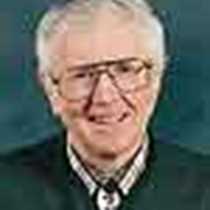Confluence of the Clearwater and Snake Rivers
Highlights of this day’s split choice adventure were seeing an harassed adult golden eagle in Hells Canyon and participating in fire making with flint and steel beside the Clearwater River.
Half of our party boarded a 50-foot jet sled that met the Sea Bird where we docked in Clarkston, Washington. The jet propelled sled surmounted a powerful spring freshet and charging white- flecked rapids for 50 miles into the heart of Hells Canyon National Recreational Area.
The greatest source of stored water in the Pacific Northwest is not behind dams. The natural reservoir is the accumulated winter snow pack that covers all the headwater reaches of the Columbia/Snake rivers extending from the Purcell Mountains in British Columbia south through the Bitteroots and Rockies into Jackson Hole and Teton National Park in Wyoming
From May into early July this natural freshet of snow melt hastens to sea and bears the out-migration of young salmon and steelhead with it. Major power dams intervened in this seaward journey when so much flow was stored and diverted through the power generators. In years of minimal snow pack this was disastrous for downstream passage and survival of young salmon. After prolonged effort and litigation an adequate flow through the spillways at each dam must now be assured to carry each new generation of salmon and steelhead to the pastures of the Pacific.
The golden eagle that soars over Hells Canyon’s heights appeared unexpectedly, perched on a boulder at the river edge. The master of the air was driven aground and harassed by a pair of nesting crows whose territory it crossed.
The golden head and nape shone in the sun. There was never a better opportunity to observe the white flecking in the primary feathers or the massive talons when the eagle flew, only to be driven aground, again, by the crows.
Those who chose the bus option up the Clearwater River visited the very camp sites where The Corps of Discovery tarried long and received so much direction and assistance from the Nez Perce tribe. Our guide, Lin Laughy, local historian and author, described how the 1806 return journey by the Corps was held up a month longer than expected by the great snow pack lingering in the Bitteroot ranges. So they lived, danced, held council and raced foot and horseback with the Nez Perce until they could cross the Great Divide.
Lin’s associates from Kamiah, Idaho, Lee and Carol Hamilton, demonstrated the Corps method of making fire with flint and steel and rope or cordage with native plant material. Guests joined in a contest of fire and cordage making.
Highlights of this day’s split choice adventure were seeing an harassed adult golden eagle in Hells Canyon and participating in fire making with flint and steel beside the Clearwater River.
Half of our party boarded a 50-foot jet sled that met the Sea Bird where we docked in Clarkston, Washington. The jet propelled sled surmounted a powerful spring freshet and charging white- flecked rapids for 50 miles into the heart of Hells Canyon National Recreational Area.
The greatest source of stored water in the Pacific Northwest is not behind dams. The natural reservoir is the accumulated winter snow pack that covers all the headwater reaches of the Columbia/Snake rivers extending from the Purcell Mountains in British Columbia south through the Bitteroots and Rockies into Jackson Hole and Teton National Park in Wyoming
From May into early July this natural freshet of snow melt hastens to sea and bears the out-migration of young salmon and steelhead with it. Major power dams intervened in this seaward journey when so much flow was stored and diverted through the power generators. In years of minimal snow pack this was disastrous for downstream passage and survival of young salmon. After prolonged effort and litigation an adequate flow through the spillways at each dam must now be assured to carry each new generation of salmon and steelhead to the pastures of the Pacific.
The golden eagle that soars over Hells Canyon’s heights appeared unexpectedly, perched on a boulder at the river edge. The master of the air was driven aground and harassed by a pair of nesting crows whose territory it crossed.
The golden head and nape shone in the sun. There was never a better opportunity to observe the white flecking in the primary feathers or the massive talons when the eagle flew, only to be driven aground, again, by the crows.
Those who chose the bus option up the Clearwater River visited the very camp sites where The Corps of Discovery tarried long and received so much direction and assistance from the Nez Perce tribe. Our guide, Lin Laughy, local historian and author, described how the 1806 return journey by the Corps was held up a month longer than expected by the great snow pack lingering in the Bitteroot ranges. So they lived, danced, held council and raced foot and horseback with the Nez Perce until they could cross the Great Divide.
Lin’s associates from Kamiah, Idaho, Lee and Carol Hamilton, demonstrated the Corps method of making fire with flint and steel and rope or cordage with native plant material. Guests joined in a contest of fire and cordage making.




